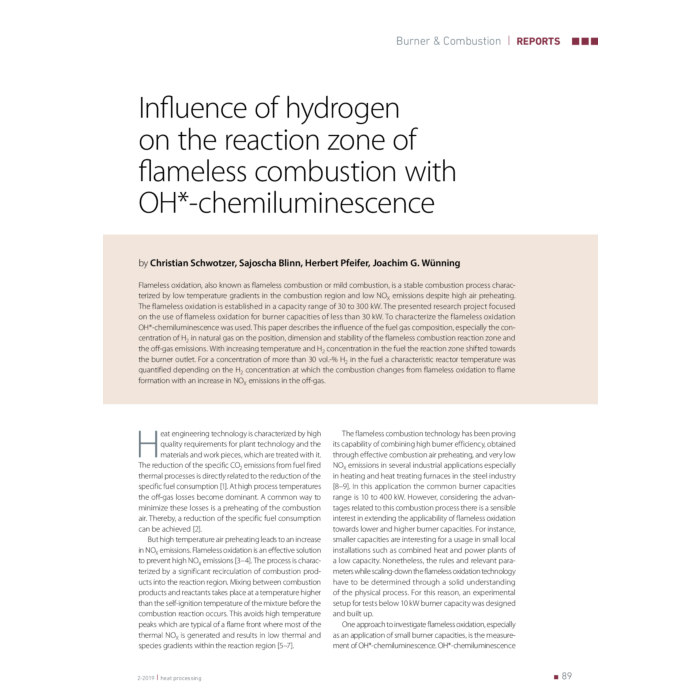Influence of hydrogen on the reaction zone of flameless combustion with OH*-chemiluminescence
4,90 €
Auf Lager
Artikelnummer
00541_2019_02_02
IFlameless oxidation, also known as flameless combustion or mild combustion, is a stable combustion process characterized by low temperature gradients in the combustion region and low NOX emissions despite high air preheating. The flameless oxidation is established in a capacity range of 30 to 300 kW. The presented research project focused on the use of flameless oxidation for burner capacities of less than 30 kW. To characterize the flameless oxidation OH*-chemiluminescence was used. This paper describes the influence of the fuel gas composition, especially the concentration of H2 in natural gas on the position, dimension and stability of the flameless combustion reaction zone and the off-gas emissions. With increasing temperature and H2 concentration in the fuel the reaction zone shifted towards the burner outlet. For a concentration of more than 30 vol.-% H2 in the fuel a characteristic reactor temperature was quantified depending on the H2 concentration at which the combustion changes from flameless oxidation to flame formation with an increase in NOX emissions in the off-gas.
| Autoren | Christian Schwotzer, Sajoscha Blinn, Herbert Pfeifer, Joachim G. Wünning |
|---|---|
| Erscheinungsdatum | 06.06.2019 |
| Format | |
| Verlag | Vulkan-Verlag GmbH |
| Sprache | Deutsch |
| Titel | Influence of hydrogen on the reaction zone of flameless combustion with OH*-chemiluminescence |
| Beschreibung | IFlameless oxidation, also known as flameless combustion or mild combustion, is a stable combustion process characterized by low temperature gradients in the combustion region and low NOX emissions despite high air preheating. The flameless oxidation is established in a capacity range of 30 to 300 kW. The presented research project focused on the use of flameless oxidation for burner capacities of less than 30 kW. To characterize the flameless oxidation OH*-chemiluminescence was used. This paper describes the influence of the fuel gas composition, especially the concentration of H2 in natural gas on the position, dimension and stability of the flameless combustion reaction zone and the off-gas emissions. With increasing temperature and H2 concentration in the fuel the reaction zone shifted towards the burner outlet. For a concentration of more than 30 vol.-% H2 in the fuel a characteristic reactor temperature was quantified depending on the H2 concentration at which the combustion changes from flameless oxidation to flame formation with an increase in NOX emissions in the off-gas. |
Eigene Bewertung schreiben


